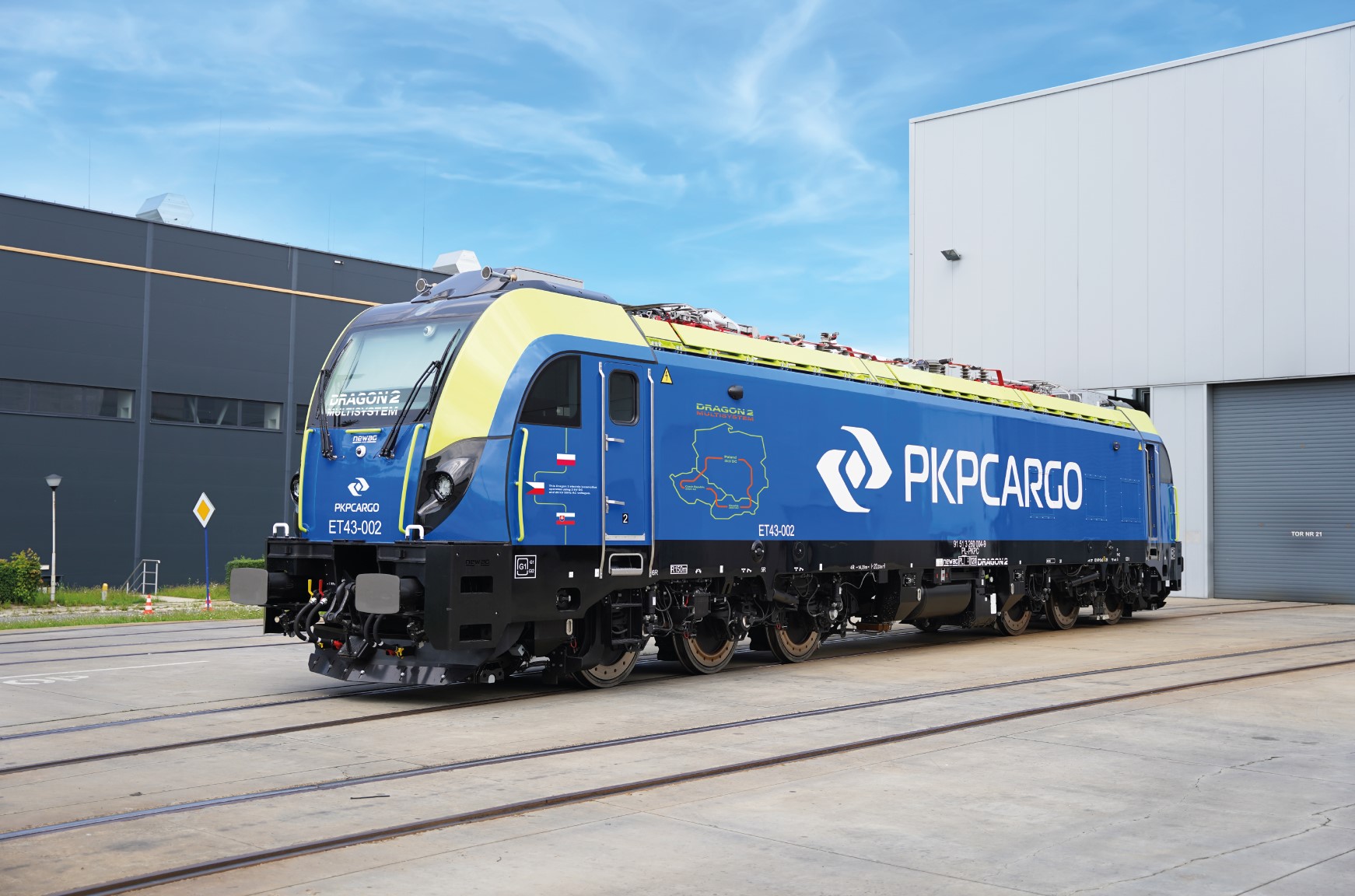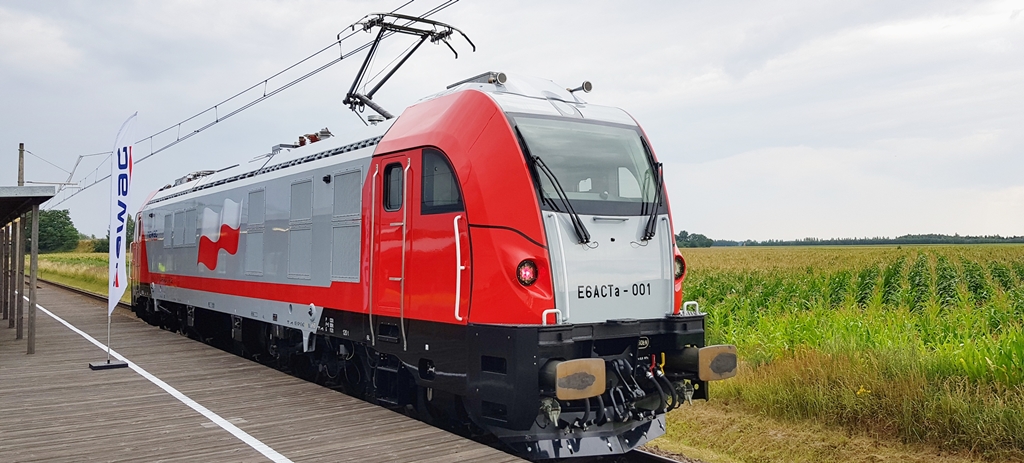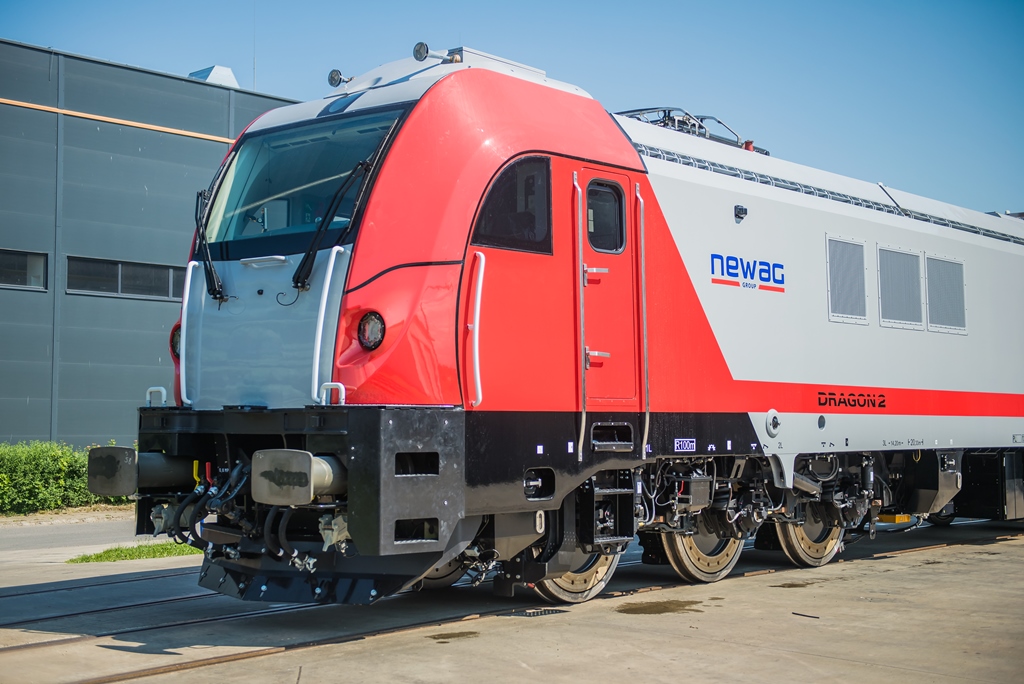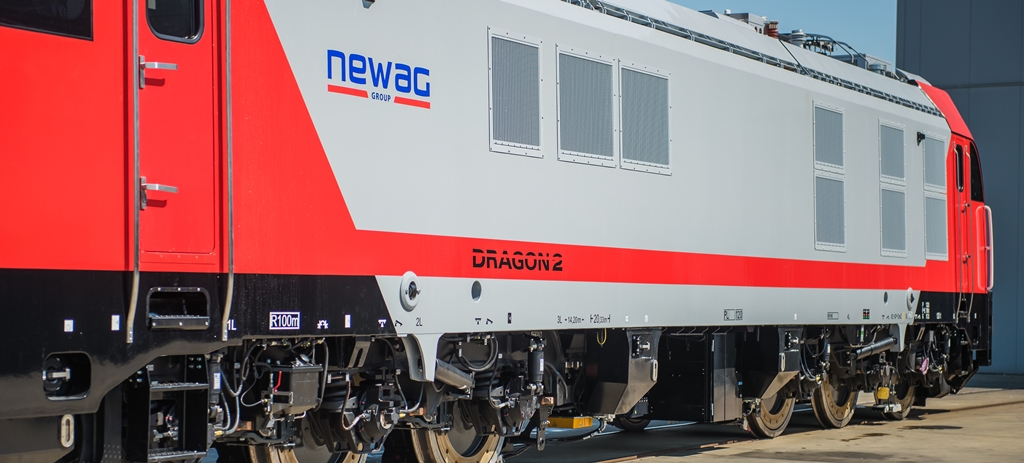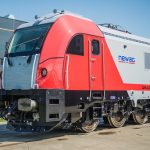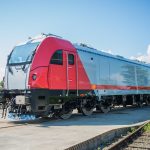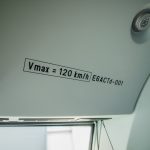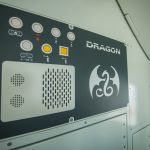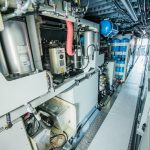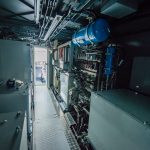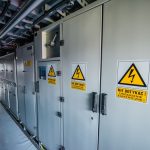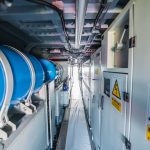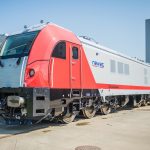E6ACTa DRAGON 2 is a six-axle locomotive designed to pull heavy freight trains. DRAGON 2 locos use cutting-edge, most reliable technological solutions and offer high comfort of the driver’s work. The main advantage of DRAGON 2 is a very high tractive effort which, when combined with a high locomotive weight, a performant antiskid system and an individual drive per each axle, allows it to pull heavy freight trains.
DRAGON 2 is the first in Europe six-axle electric locomotive fully compliant with the Technical Specifications for Interoperability (TSI 2014) and it is equipped with Level 2 ECTS System. The locomotive has SiC-based converters, ensuring smooth operation in high temperatures, reduced noise levels, a 50% reduction in energy loss and its machinery size and weight have been reduced by 60%.
![]() Basic features:
Basic features:
- technical parameters tailored to individual clients’ needs
- able to pull freight trains of up to 3200 tonnes and passenger trains of up to 800 tonnes
- asynchronous drive
- driven by IGBT-based traction inverters
- microprocessor-based control system
- on-board diagnostic system with full visual information and a data registration module
- intelligent power management system
- high technical availability rate
- adapted for ERTMS and GSM-R installation
- modular structure
- highest safety level
- spacious driver’s cab meeting EN 1527 requirements
- enhanced working conditions for drivers
- enhanced driver’s cab amenities
- environmentally- friendly
- ergonomic
- competitively priced
![]() Drive:
Drive:
- monoblock wheels with a nominal diameter of 1250 mm
- braking discs fixed on both sides of the wheel
- asynchronous traction cage motors with power of 1400 kW each
- independent cooling of each motor
- helical gearbox units
- axle box: conical roller bearings, temperature and speed sensors
![]() Suspension:
Suspension:
- primary level: two sets of coil springs mounted directly on both sides of the wheelset axle box
- secondary level: a set of large-scale flexicoil spiral springs
- hydraulic shock absorbers for muffling vibrations
![]() Locomotive body:
Locomotive body:
- integral welded design
- crumple zones
- safety cage in driver’s cab
- anti-climbing system
- modular structure
- three roof sections allowing easy access to the machine space
- ergonomic, two-person driver’s cab
- dual module air-conditioning
- four video cameras acting as rear-view mirrors
- two cameras showing images of draw hooks and screw couplers
- modern fire detection and fire extinguishing system
![]() High voltage electrical circuits:
High voltage electrical circuits:
- two or four single-arm pantographs with independent control system and ADD system
- reliable high-speed circuit-breaker- UR26 Secheron
- anti-interference filters
- traction transformer to reduce voltage from the overhead line 15kV/16,7Hz or 25kV/50Hz to the voltage powering the inverter input
- two blocks of power supply with each containing two AC/AC inverters –three-phase inverters with IGBT transistors and DC/DC converter to vary electro-dynamic braking force
- 2 x 130 kW static converter with input voltage of 3 x 440 V AC, 60 Hz and 24 V DC
- individual water cooling system for each of the supply blocks
![]() Low-voltage electrical circuits:
Low-voltage electrical circuits:
- 24 V DC obtained from additional battery charger powered with 3x400V. Power supply to: control circuits, high-speed circuit-breaker, control system of measuring converters, battery charging system, equipment of the control panel, pneumatic system controls, internal and external lighting and windscreen wipers
- top-class 335Ah FNC battery system
- power outage in the overhead line does not result in switching off external lights for minimum 5 hours. In idle state, the control system switches off unused equipment saving electricity.
![]() Locomotive diagnostics and control:
Locomotive diagnostics and control:
- microprocessor-based control system
- loco controller in distributed structure
- drive controller
- two independent panels to display drive parameters and diagnostics in each cab
- event recorder synchronized with electronic speedometer
- adapted to GPS installation transmitting diagnostic data
![]() Functions:
Functions:
- overall control of locomotive operation
- setting tractive effort
- fully automatic drive control with speed set by loco driver
- Start-up and braking processes controlled by anti-skid system working independently per each wheelset
- controlling the pneumatic system
- varying the electro-dynamic braking power
- full locomotive diagnostics with event recording


